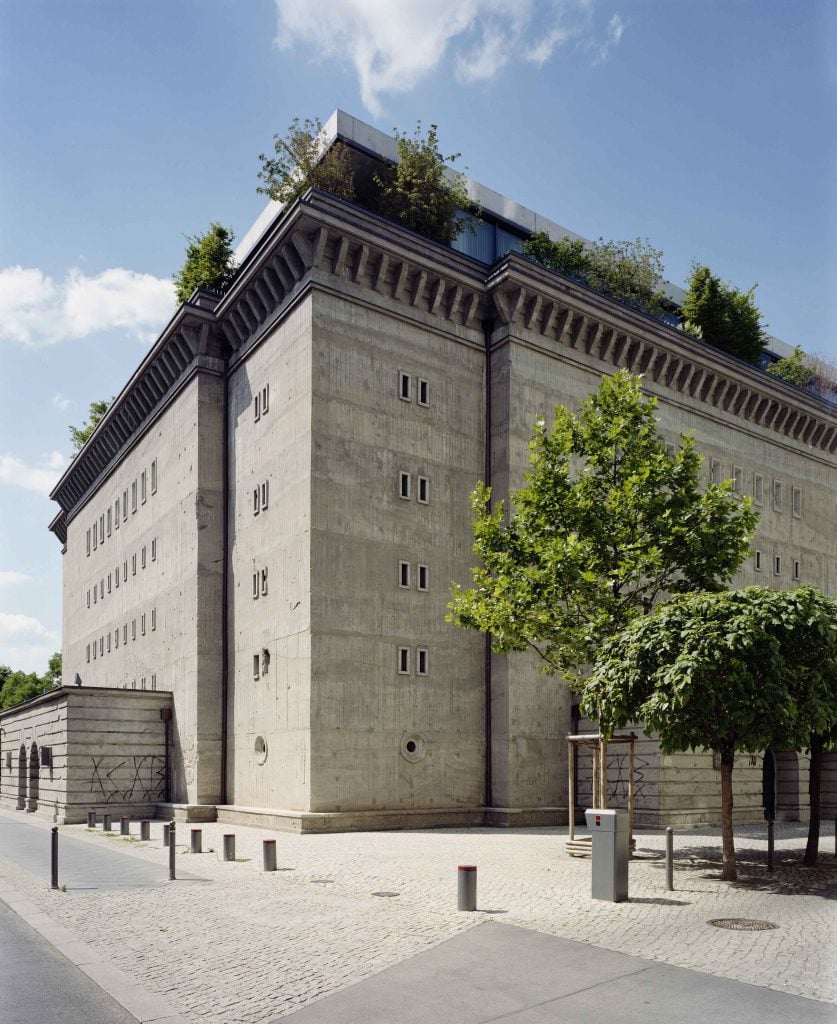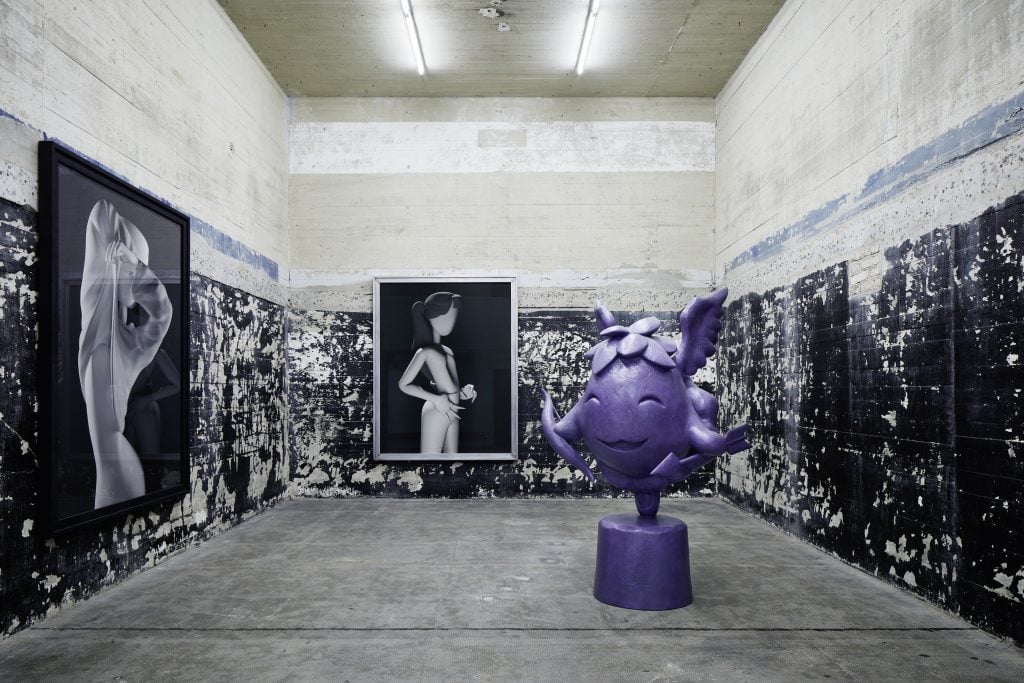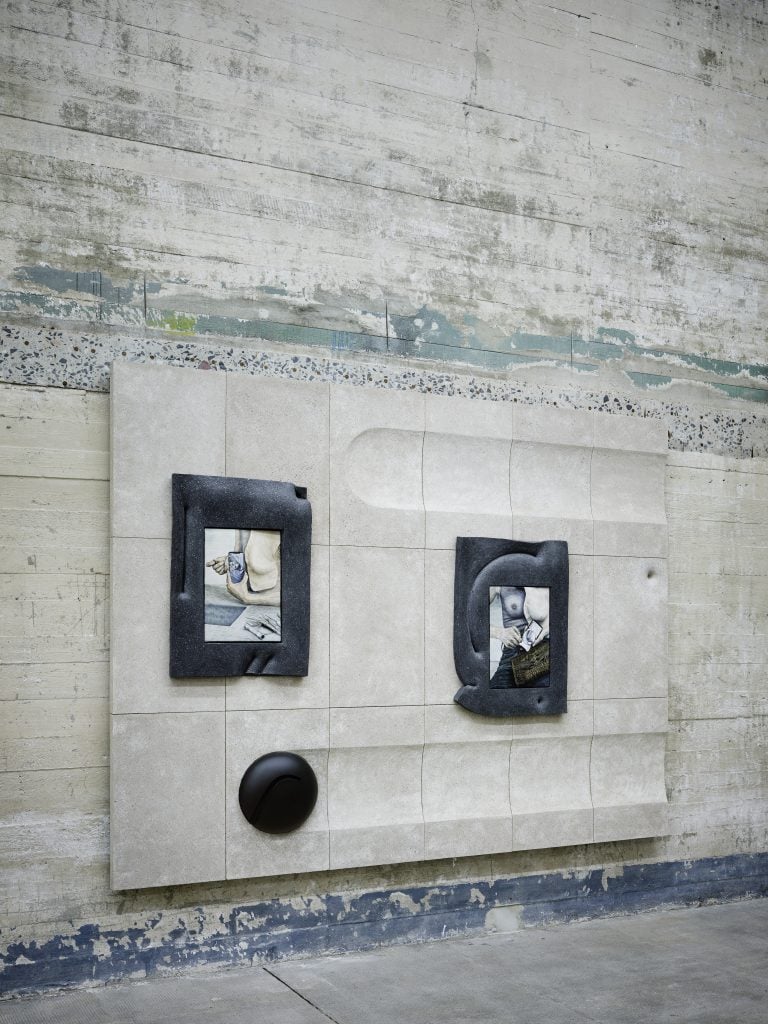
When Cate Blanchett made location visits in Berlin as she prepared for her on-screen role as Lydia Tár, she knew she had arrived at the right place when she visited the home of Christian and Karen Boros, a collector duo whose apartment is stacked on top . a war bunker in the former East.
The building and the Boros residence indeed radiate a quiet power. The modern penthouse is bold, opulent, masculine and an intelligent combination of modernity and history, so reminiscent of Berlin. “She told us it was the only house she could imagine Lydia’s character in,” Karen told me. The couple agreed to hand over the keys to the producers of TAR and go away for a while.
That may have been the first time that a wide audience could see his private residence, but on the floors below the public is welcome all year round and finds it a formidable presentation of the Boros’ art collection. The exhibition space itself offers plenty to look at: the exterior walls display shrapnel from the Battle of Berlin; interior concrete rooms in some places show traces of graffiti from the years when the building was a venue for raves.
Currently, works by 27 artists are spread throughout the cumbersome spaces of the bunker. Their fourth presentation, on view since 2022 (until 2026), is just like the previous ones: a breathtaking range of contemporary art, fresh from the studio. In one room you’ll find large portraits and sculptures of Bunny Rogers that reference bygone gaming characters that are special yet universal. In another part of the bunker the sounds from the work of Eliza Douglas and Anne Imhof can be heard Clock reflect off the concrete.

Boros Collection, Berlin © NOSHE
Visitors can join guided tours to experience these works and the bunker’s reputation attracts a wide audience with varying levels of art world knowledge. “What started out of necessity because people cannot walk through the bunker themselves developed into a quite intense mediation process,” says Karen. “People who come here should take an hour and a half of their time and let the experience happen.”
The Boro’s focus on collecting reached new urgency during lockdown when they collaborated with famed techno club Berghain to showcase Berlin art. This kind of mediation work is part of that won the Boros this year Art Cologne prize, an annual award presented by the Federal Association of German Galleries and Art Dealers and Koelnmesse, the parent company of Art Cologne. The fair opens this week in the West German city on the Rhine.
When I spoke to Karen and Christian, they were wandering around institutions and museums in Greece. Their agenda for this fall included stops in London for Frieze Week and in Paris for Art Basel Paris, where they purchased work by Parisian painter Pol Taburet.
“I was very impressed by Mire Lee’s installation in the Turbine Hall of Tate Modern, London,” said Christian. “My reaction was both fascination and provocation combined with a strange gut feeling. Mire’s moving sculptures in particular evoke something very human: living and decaying material that seems to have been removed from the body.”
The couple recently purchased work by Berlin-based artist Sung Tieu from East Germany, a child of Vietnamese immigrants, whose work overlooks German history. In June they also purchased work by Oliver Bak at Art Basel, who was recently included in the selection of Sprüth Magers.
The works they buy may not yet be by well-known artists. “We try to pick up topics that artists are working with, that are current and reflective of our times now,” says Karen. As such, they prefer newly released works that are less than a year old, often avoiding secondary auctions.

Anna Uddenberg. Boros Collection, Berlin © NOSHE
“It’s not a collection of consensus,” Karen added. “When we started doing this together, we decided to give each other the space to decide for ourselves. If I feel strongly about an artist and believe in him, Christian says, ‘Okay, you should follow that,’ and vice versa. But we always discuss it.” Imhof’s first works were something Karen had a strong feeling for, and Christian less so. “He had to grow into it and later we bought pieces together.”
Since opening in 2008 (they bought the bunker in 2003), the exhibitions have changed every four years, reflecting their evolving tastes and recent purchases. The collection started in the 1990s. Around that time, Christian met Jay Jopling, founder of White Cube, and they went out drinking. Jopling invited him to visit the studio of the young YBA artist Damien Hirst and ended up purchasing a few works. He also met and acquired work by Tracey Emin and Sarah Lucas.
The collection is now also partly an overview of artistic production from Berlin, as their support for the German capital’s gallery scene is strong. They were early champions of outfits like Neugerreimschneider and Max Hetzler, both of whom opened spaces in the city in the mid-1990s. Berlin remains a constant source of discovery and inspiration for the couple, who bring in a new generation of galleries, from Chert Lüdde to even younger galleries, including Sweetwater, Molitor and Heidi.
“We have a network of galleries that we strongly believe in and support,” says Karen, adding that they also regularly buy from galleries at fairs. “We know that the galleries we support often have good works for the fairs, so we often go there and plan not to buy, but we end up buying something anyway.”

Bunny Rogers. Boros Collection, Berlin © NOSHE
“Berlin is still very exciting, even if people sometimes act as if the changes here have been negative. The galleries do great work, have a strong reputation internationally and are globally connected,” said Karen. “Of course you always look back on decisions and wonder why you didn’t realize or see something at the time. There are always gaps and the mistakes are part of the collection. The collection is also defined by the missing pieces that we did not purchase.”
The market downturn has been positive for collectors like the Boros, who cherish the slowdown. “Gone are the days when collectors just heard a name and then bought a piece without really looking at it,” said Karen. “For those of us who have been doing this for 30 years, in some ways this can only be a healthy direction. Some people who invest in art and sell it have calmed down a bit. This gives us more time to think about the work we are considering purchasing.”
She noted that, according to the UBS and Art Basel art market report, collectors are still buying work from young and emerging artists. “Three or four years ago you might start with $20,000 to $30,000 per job and a year or so later it would be double that. That will not happen so easily anymore,” she says, adding that “in any case, quality is still demanded.” However, she noted that because prices are not rising as quickly as they used to, this could put further pressure on galleries’ margins as shipping and fair fees have become more expensive. “The cost-efficiency of running a gallery is being challenged,” she said.

Klara Hosnedlová. Boros Collection, Berlin © NOSHE
Despite this deep focus on contemporary and fresh work from the studio, there are some historical standouts in their penthouse, including some medieval artworks and works by Louise Bourgeois and Jenny Holzer. In their country house outside Berlin there are some works that do not fit in the bunker conceptually or logistically, such as those by Olafur Eliasson. Your spiral vision (2002), a large silver walk-through tunnel.
The duo ponders what is to come for the next exhibition cycle at the Boros in 2026. “The challenge is to determine when we can show some of the pieces we have already shown, and where and how we can reactivate them ”, Karen said. “It will be an interesting point for us when we start showing artists like Michael Sailstorfer, Michel Majerus and Eliasson and putting them in context with a younger generation of artists that we have acquired.”
As they continue to cement their legacy within the European art world, I asked Christian what advice he would give to young aspiring collectors. “Sleep on it before purchasing a work of art and never rush into a spontaneous decision,” he said. “Will the enthusiasm and magic continue the next day? You should also buy works that irritate, provoke and disturb. Beautiful art that quickly appeals, but quickly becomes boring. Art that remains relevant after a long time was always disruptive in its time.”